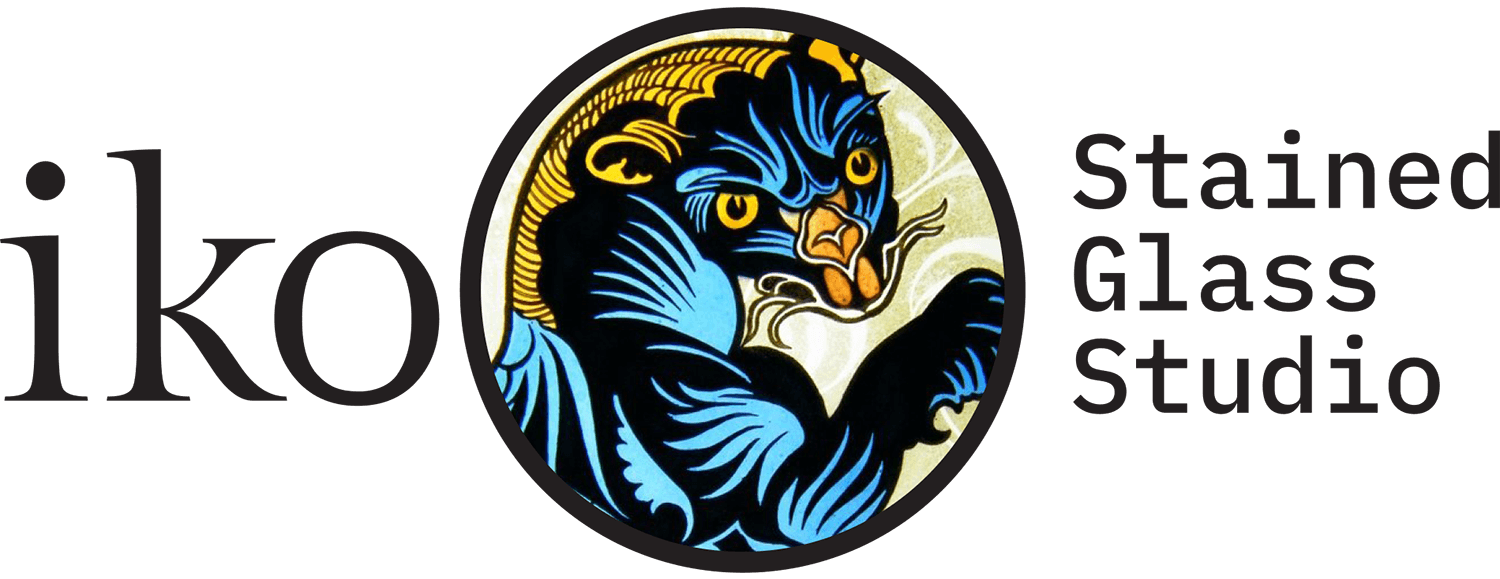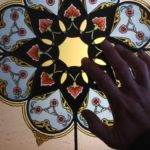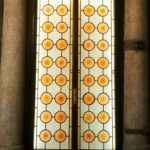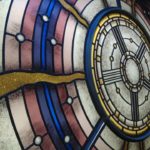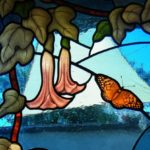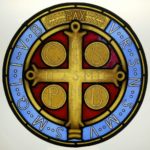Lead-lights
In general, lead-lights are decorative windows composed of a mosaic of coloured glass held together with lead cames which have been soldered together.
The lead cames normally have a cross section in the shape of an H, varying in size from 3mm to 24mm. In order to create a harmonious design, different thickness of lead can be used in a single window, to great effect.
The technique for leading stained glass, which is also referred to as the traditional technique, was invented in the Middle Ages and can be found in many European cathedrals.
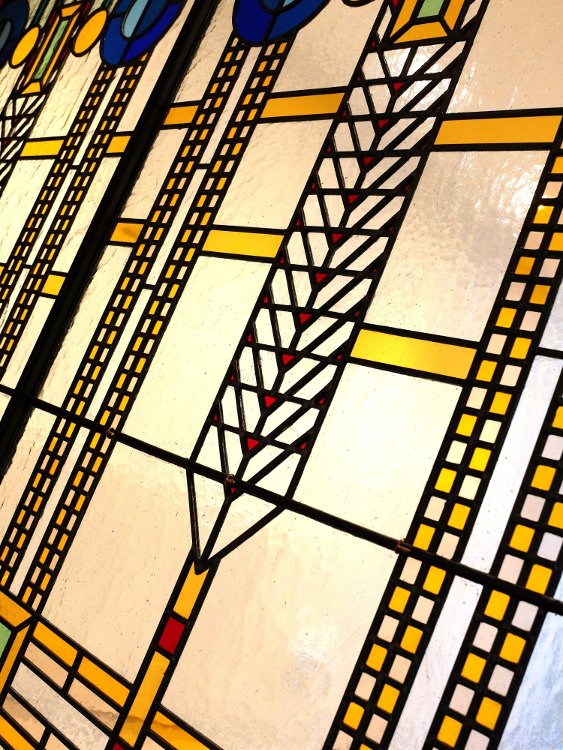
Lead lights are unpainted glass panel with a simpler design than that found in stained glass for normal domestic use or or commercial glazing. Stained glass windows have a more complex design, the coloured glass is normally painted making a more suitable technique for religious purposes.
In leadlight panels the lead cames are more visible, creating a pattern of black lines normally with a geometrical pattern. This cutting and leading the glass correctly is very important so as to avoid an unpleasant visual impact.
Lead-lights are of Roman origin and were generally made out of glass or really thin alabaster sheets held together with a structure of wood or stone. The lead was introduced in early medieval times, and due to its malleability it was the perfect material to bend around the different shapes of glass.
Leaded stained glass window, lead lights window created for a private apartment in Rome. Geometrical window with a very large number of little glass fragment of mouth blown glass. In this case both, the glass cutting and the leading have to be very precise in order to create a precise geometrical pattern.

In other styles of stained glass such as in figurative art, the lead loses part of its artistic function. As the figurative becomes more important, the leaded lines are often hidden in shadow to give more importance to pictorial lines.
In an unpainted leaded glass is the same lead is used to decorate the panel, often with geometric shapes, it is up to the skilled craftsman to make a cut of the glass and choose the right thickness of lead to ensure it doesn’t spoil the work’s aesthetic.
There are two techniques for weaving stained glass, leading or copper-foiling, which is also referred to as the Tiffany technique. The latterappeared on the market more recently and is more widespread as a hobby because it requires less equipment to make.
As a stained glass studio, we we prefer the technique of leaded glass than Tiffany, for various reasons:
- From a purely aesthetic point of view, a leaded glass panel has a uniformed thickness, which does not occur with the copper-foil technique and this has a strong aesthetic appeal presents the lines of union between one glass and another of a constant thickness, this does not occur in a window made with the Tiffany technique.
- From the structural point of view, the lead weaving is much stronger and and allows larger panels to be created, without the need to sandwich them with double-glazing.
- Lastly, but most importantly, leaded glass is much easier to restore than a Tiffany glass panel, the lead weaving can be disassembled to be replaced and in the case of some broken pieces, it can be extracted to repair it or eventually replace it.
